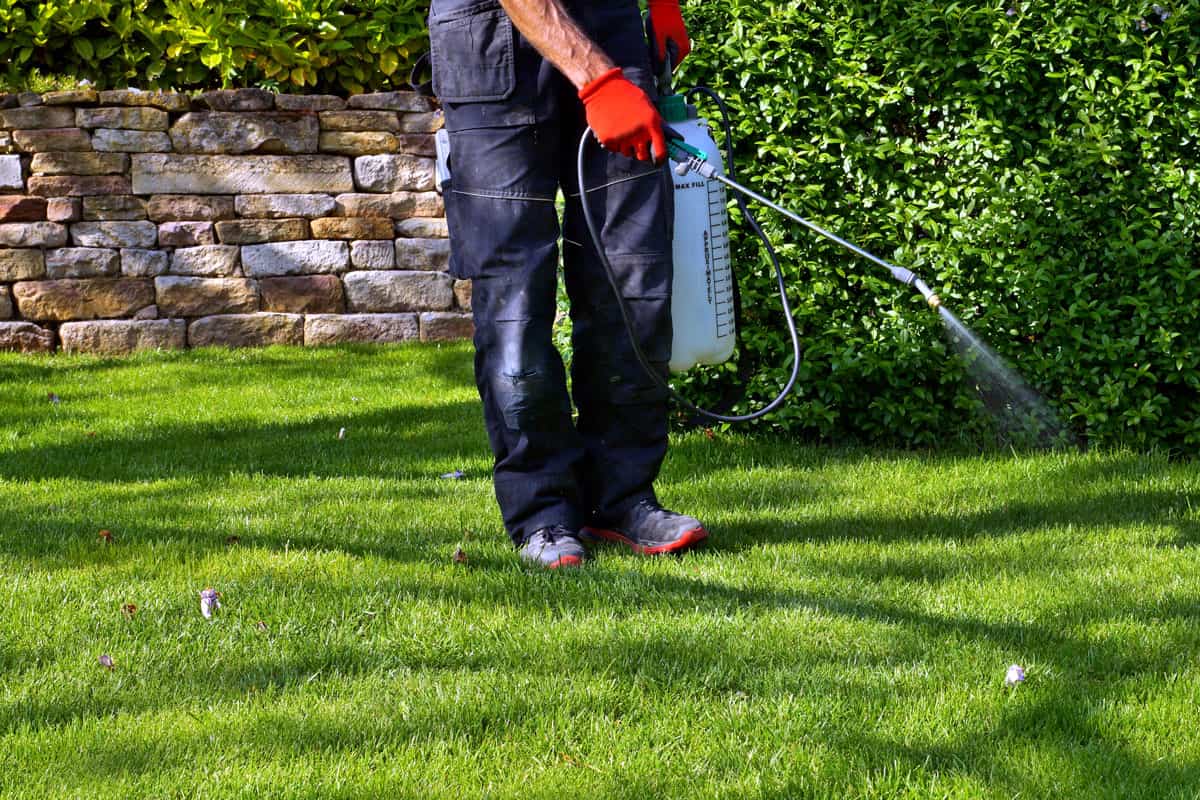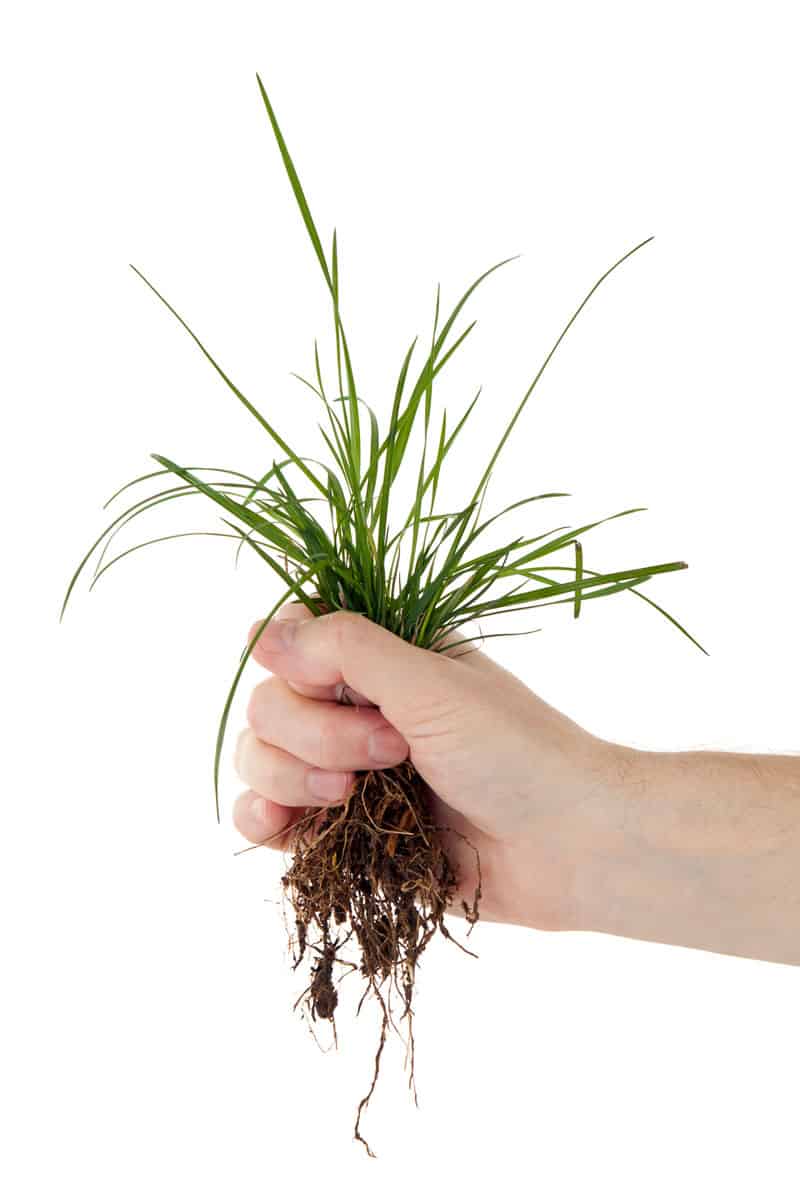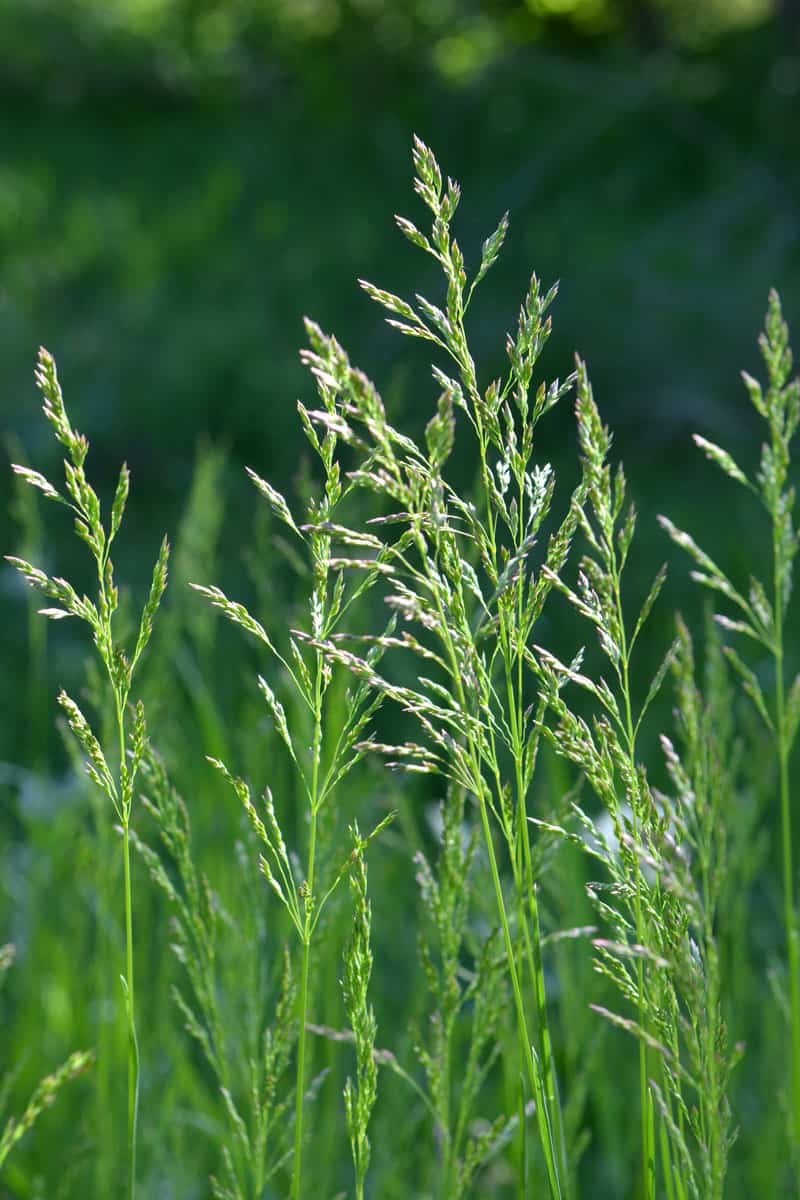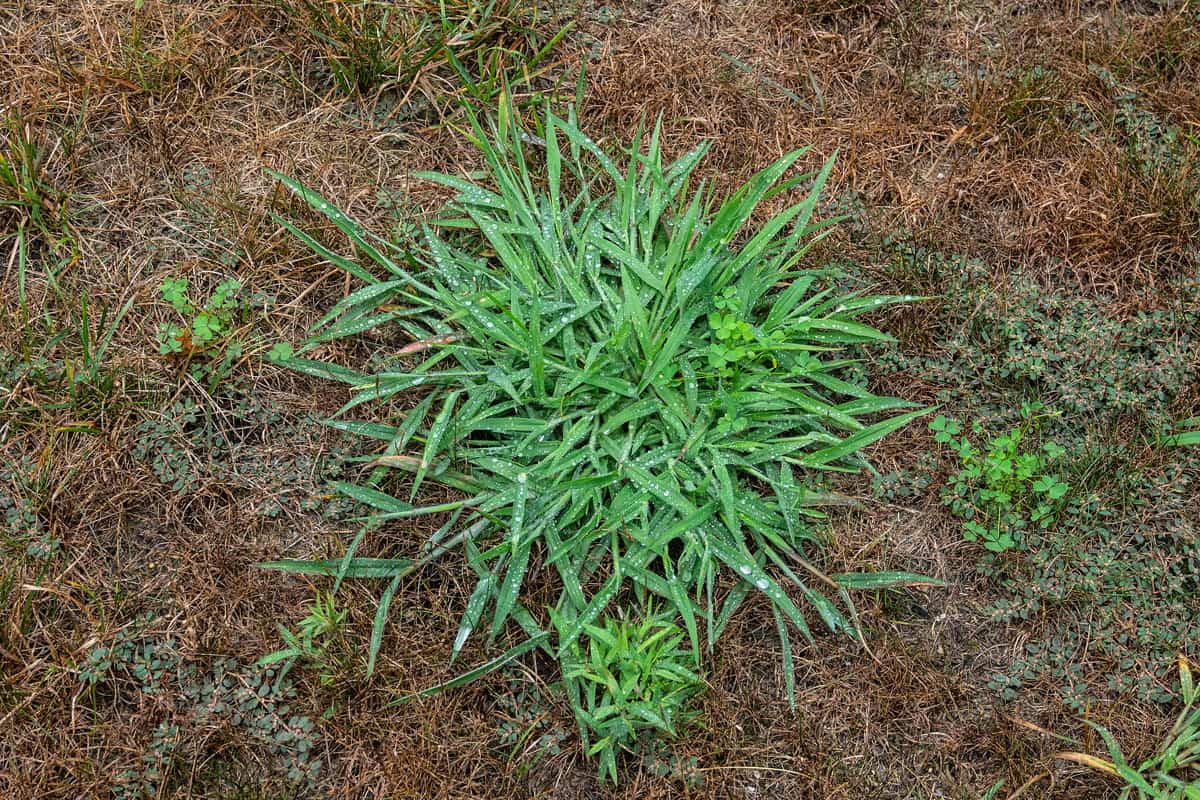Poa Annua is a common grassy weed that grows early in the season and dies off in the summer, leaving you with bare patches in your lawn. This article will answer if Tenacity kills Poa Annua and how to control this grassy weed from taking over your yard.
Tenacity is not labeled to kill Poa Annua. However, recent studies have shown that Tenacity does work to kill Poa Annua while not harming your desirable grass. Many lawn owners utilize Tenacity off-label for this reason.
Now you know that Tenacity can kill Poa Annua, but this systematic herbicide will tackle much more. Keep reading as we discuss what Tenacity does and doesn't kill and answer how you can get rid of Poa Annua without killing your grass.

What Does Tenacity Kill?
Tenacity is popular among lawn owners due to its ability to get on top of tough to control weeds. The active ingredient in this herbicide is mesotrione, an organic compound that works as a selective herbicide.
This compound works by inhibiting the photosynthesis of susceptible plants. While eliminating the problem plant, Tenacity encourages new growth of the desired grass by removing weed competition.
Tenacity is used both on and off label. Some weeds that Tenacity kills include the following:
- Crabgrass
- Niblewill
- Nut grass
- Dandelions
- Clover
- Ground Ivy
- Dicots
- Monocot broadleaf weeds

As Tenacity works on these pesky species, you will see their leaves turn white and die off. You can leave dead weeds to compost naturally in the yard. In some cases, you may need to complete a second treatment a couple of weeks later to tackle whatever is left.
Is Tenacity Pre- Or Post-Emergent?
Another characteristic adding to Tenacity's popularity is that it works as both a pre-and post-emergent herbicide. This means you can use Tenacity on your lawn to tackle weeds before they sprout or after you notice weeds growing among your grass.
To use Tenacity as a pre-emergent herbicide, you should apply it to your lawn in the fall or early spring. You want to apply the herbicide before temperatures reach over 80 degrees for best results.
When using Tenacity as a post-emergent, you aim to apply it to actively growing, young weeds. You should wait until four weeks after your lawn has germinated or time it after your lawn has been mowed twice.
What Will Tenacity Not Kill?
You should familiarize yourself with what your intended herbicide does and doesn't kill. This way, you will avoid purchasing something that kills your turfgrass or other wanted plants in the area.
Tenacity doesn't kill St. Augustine or Centipede grass. Furthermore, Tenacity has a harder time killing mature weeds. While this herbicide can be used as a post-emergent herbicide, weeds exceeding 30 days old may require additional treatments.
Read more on our blog post, "Is Tenacity Herbicide Safe For Pets?"
How Do I Get Rid Of Poa Annua Without Killing My Grass?
Poa Annua, or annual bluegrass, spreads its seeds every year. This allows for the grass to come back the following year. This yearly infestation can become a regular nuisance. Luckily, there are ways to combat it.

One way to combat Poa Annua without killing your desired grass is to utilize pre-emergent herbicides. This will stop Poa Annua seeds as they sprout and prevent future seeds from dropping.
You can use pre-emergent herbicides in the fall when soil temperatures drop below 70 degrees. You can apply a second round of pre-emergent herbicide in early spring, right before the growing season.
As you work to get the weeds under control, you want to keep up with the health of your grass. These good practices will prevent your grass from dying off. Practice consistent watering, fertilization, and mowing of your lawn during the growing season.
Before using a herbicide in your yard, familiarize yourself with the manufacturer's guidelines. Ensuring you are applying your product at the right time, at the correct dilution, will prevent you from hurting your lawn.
What Herbicide Should I Use On Poa Annua?
As we mentioned, Tenacity is not labeled for Poa Annua, but it does work. You can apply Tenacity to your lawn 2-4 times, with two weeks in between applications, to combat Poa Annua. You can begin these applications around September or October.
Amazon offers Tenacity herbicide here.
Let's take a look at other herbicide choices for tackling Poa Annua.
RoundUp
If you are combating a small amount of Poa Annua, you might be seeking spot treatments over full-yard herbicide applications. Roundup is a non-selective herbicide that can be perfect for the job.
Since RoundUp attacks all growing plants, you want to apply this when the rest of your yard is dormant. If you decide to use this when your lawn is growing, place a protective barrier around your Poa Annua before application.
You can find RoundUp here on Amazon.
Atrazine
Another herbicide option for Poa Annua is Atrazine. Although, this herbicide should only be used with Centipede or St. Augustine grass lawns. Atrazine will harm grasses such as Kentucky Bluegrass or Bermuda grass.
Atrazine kills Poa Annua while preventing seeds from sprouting. Furthermore, this is an excellent choice if you are also battling crabgrass in your lawn. You can apply Atrazine in spring, summer, or fall.
Amazon offers Atrazine herbicide here.
Prograss EC
The last herbicide we will talk about is Prograss EC. This industrial herbicide works great on Poa Annua as a post-emergent. If you have missed the time frame for your pre-emergent herbicides, Prograss EC can be used at any time in spring, summer, or winter.
Prograss EC can be applied up to three times, with two weeks in-between applications.

Read more on our blog post, "Why Is My Grass Turning White?"
Can You Pull Poa Annua?
Hand weeding works great in small yards or if you only have a couple of clusters of Poa Annua coming up in your yard. Pulling this plant before it seeds helps prevent future Poa Annua from sprouting.
When pulling any weed, you want to ensure you remove the entire plant down to the root. This is easily done when the plant is young. However, you can wait until after a rain or water your yard to make pulling a little easier.

You can pair pulling Poa Annua with the use of herbicides. For example, if you used a pre-emergent herbicide but notice Poa Annua clumps still coming through, walk through the yard and pull out what you see.
Pulling weeds may become unmanageable in larger yards or with bigger infestations. In these cases, chemical intervention is almost always necessary and saves you work in the next growing season.
Is Poa Annua The Same As Crabgrass?
Poa Annua is not the same as crabgrass. While they have some similarities in the way they look, there are plenty of ways to tell the difference.
You want to know what weed you are combating before going ahead with treatment to ensure you treat it with the right product. Using the wrong product can leave you with weeds or kill off parts of your healthy lawn.
Poa Annua is bright green, typically being greener than your lawn. You'll find it growing in clumps or a bunch-like pattern. Additionally, Poa Annua will have tasseled stalks that grow tall above the grass.
You will see Poa Annua growing in late spring or early summer. The seeds will appear as white feathery tips near the end of these seasons.

Unlike Poa Annua, Crabgrass grows low to the ground. It is also light green, but not as bright. You will see many legs, or stems, of these weeds growing out the sides. Crabgrass grows in clumps and may appear to have a star pattern in the middle.
The stems of crabgrass will tend to be much thicker than those of Poa Annua. Even in early stages, you can identify crabgrass by its horizontal growth.

It can be difficult, or even impossible, to identify which weed you have when they first sprout. You may have to wait 2-3 weeks after seeds first germinate to determine what you are dealing with.
In Summary

Even though Tenacity is not labeled for it, this herbicide can kill Poa Annua when utilized as a pre-emergent herbicide. We hope you found this article helpful when tackling any Poa Annua that may be lurking in your yard.
Are you searching for more lawn tips? Look through our blog post, "Will Lawn Fertilizer Make Weeds Grow?"



